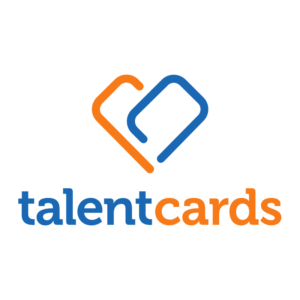6 Microlearning Ideas For Customer Training
Customer training can be the beginning of a beautiful journey. By training your customers, you ensure they'll understand your value proposition and be able to use your products or services in the most efficient way. This will increase customer satisfaction, turn them into long-term users, and, ultimately, ambassadors for your brand.
Through customer training, you can also ramp up your upselling and cross-selling initiatives—because if people know one of your products can make their lives easier, they'll be more willing to try out other products as well. And via this constant dialogue with your clients, chances are you'll get a lot of actionable feedback that will allow you to build even better products in the future, resulting in even happier customers.
It sounds perfect, right? There's only one problem: people really, really dislike having to take training just to buy a product or service. Even when said training is entirely self-paced and simple in form, like reading through FAQs and browsing user forums, it can still make them drop off instead of engaging further.
So, how can you reap all the benefits of customer training without actually making it feel like work that drives people away? Enter microlearning.
What is microlearning? As a learning approach, microlearning is like a magnifying lens that only focuses on the most essential parts of a product, skill, or idea. It offers learners exactly what they need to know about a subject right now, in the shortest amount of time available, offering "bite-sized" content—often in an interactive way.
In short, if you want to keep your customers engaged long enough to ensure the customer training you're delivering is impactful, microlearning is your best bet.
Why Microlearning?
Microlearning is used broadly in all kinds of training—and for good reason.
For starters, microlearning is a better fit for the brain's working memory ability: learning things in small doses improves information retention. It's also cost-effective (think 50% decrease in course development costs) and three times quicker to put together than a traditional training program.
But why is microlearning great specifically for customer training?
It's Quick
The nugget-size character of microlearning courses makes them ideal for customers who don't want to invest a lot of their time in training.
Following microlearning best practices, videos and other instructional material are delivered in small installments that don't take more than three to seven minutes to complete.
It's Specific
Since there is no time to waste, microlearning won't bore your clients with unnecessary fluff or long definitions of technical terms. You'll go straight to the point—and customers will focus on what they need to learn.
It's More Impactful
Precisely because of its short and to-the-point character, microlearning courses engage learners. It's easier to watch and pay attention to a five-minute video, for example, as opposed to reading a five-page guide or attending a one-hour presentation.
Short, to-the-point content minimizes distractions, which means that learning is more likely to stick.
It's Mobile-Friendly
One of the biggest hurdles with customer training is finding a way to reach your customers where they are at any given moment.
Microlearning is usually delivered via a mobile LMS, which means all the content can be downloaded and viewed offline, giving your customers access to all the information they need regardless of where they're located at the moment.
It's More Fun
When you create microlearning courses, you have more flexibility to experiment with how you present your content. Adding interactive or gamification elements, like quizzes and scoreboards, will make your training more accessible and fun.
And that's the "vibe" you want to achieve with your customers: training shouldn't feel like hard work.
6 Ways To Use Microlearning In Customer Training
Microlearning is not a monolith. It may be defined by its short length, but, as a form of training, it's an extremely varied one. So, if you're looking for ways to get started with customer training, here are some microlearning examples you can keep in mind.
1. Get To The Point With Product Feature Videos
This is one of the most common approaches to customer training. You want your customer to use your products and services the way they were intended and get the most value out of them.
With microlearning, you can create short videos that explain how a product works or walk your customers through the process of using one of your services. These videos can be animated, simple screen recordings, or a combination of both.
The benefit of using microlearning videos or online courses is that customers can instantly find and focus on the exact feature or use case that interests them—and skip the rest.
2. Show real users interacting with your products
A way to take this practice even further? Feature real people who have already used your offerings: this can double as a case study of your "star" customers. It's a chance to show how they've found success with the help of your products or services.
3. Inspire And Educate Your Clients With Industry-Specific Minicourses
Microlearning actually makes it possible to create an inspirational or educational series related to your industry—something that would have felt overwhelming (both for your budget and for your customers) if you had to use more traditional training methods.
Using a series of short texts, infographics, videos, or even quizzes, you can cover industry-related topics that would interest your customers. This will help you position yourself as an expert in your niche. You could also consider providing certificates by the end of the program as an extra reward.
4. Use Gamification To Increase Brand Engagement
People love gamified content like quizzes and scoreboards. If you want your customers to interact more with your brand and ultimately learn more about your company and your values, add gamification elements to your microlearning strategy. That's the first step in getting them to become your brand ambassadors.
For example, your customers can earn points every time they complete a minicourse. And, as soon as they reach a certain amount of points, they could get a certificate they can share online and showcase on LinkedIn.
5. Do Q&A Round-Ups To Address Pain Points
Often, customers have pain points they're not sure how to solve with your products or services. Or, there are features that users don't instantly "get," resulting in misuse or no use at all.
Using data from your customer journey and checking what are the most common queries your support team gets, you can come up with a special Q&A round-up (like a video or a set of text cards) you can include in your microlearning sessions.
6. Use Spaced Repetition To Make Training Stick
As we've already seen, microlearning makes it easier to remember information. But you can further tap into that by using "spaced repetition:" a method that repeats information to make sure people understand and remember what they're learning.
A mobile training platform could automatically identify each user's problem areas and adjust the training material for them, repeating information every now and then as needed. That means your clients will only spend time on topics that they need to learn more about, and not on things they already know, minimizing the chances of disengagement.
Is Microlearning Enough?
It's clear by now that microlearning is a great way to engage with your customers. It gives them the opportunity to familiarize themselves with your products and brand easier and in a more fun way. It also eliminates pain points and helps customers become return customers and, ultimately, brand ambassadors.
At the same time, creating a microlearning program saves you money and time compared to traditional training programs. And investing in a mobile LMS that can deliver this experience seamlessly ties everything together.
But while offering comprehensive and varied customer training using microlearning can solve a lot of problems, this doesn't mean it should replace your customer support team. Potential or existing customers will always have more complex issues that require more than a quick video or factsheet to solve.
And whether you have a chatbot, a call center, a FAQ page, or a combination of the three in place, you'll find that microlearning and customer training work in tandem with your other systems—not in lieu of them.


